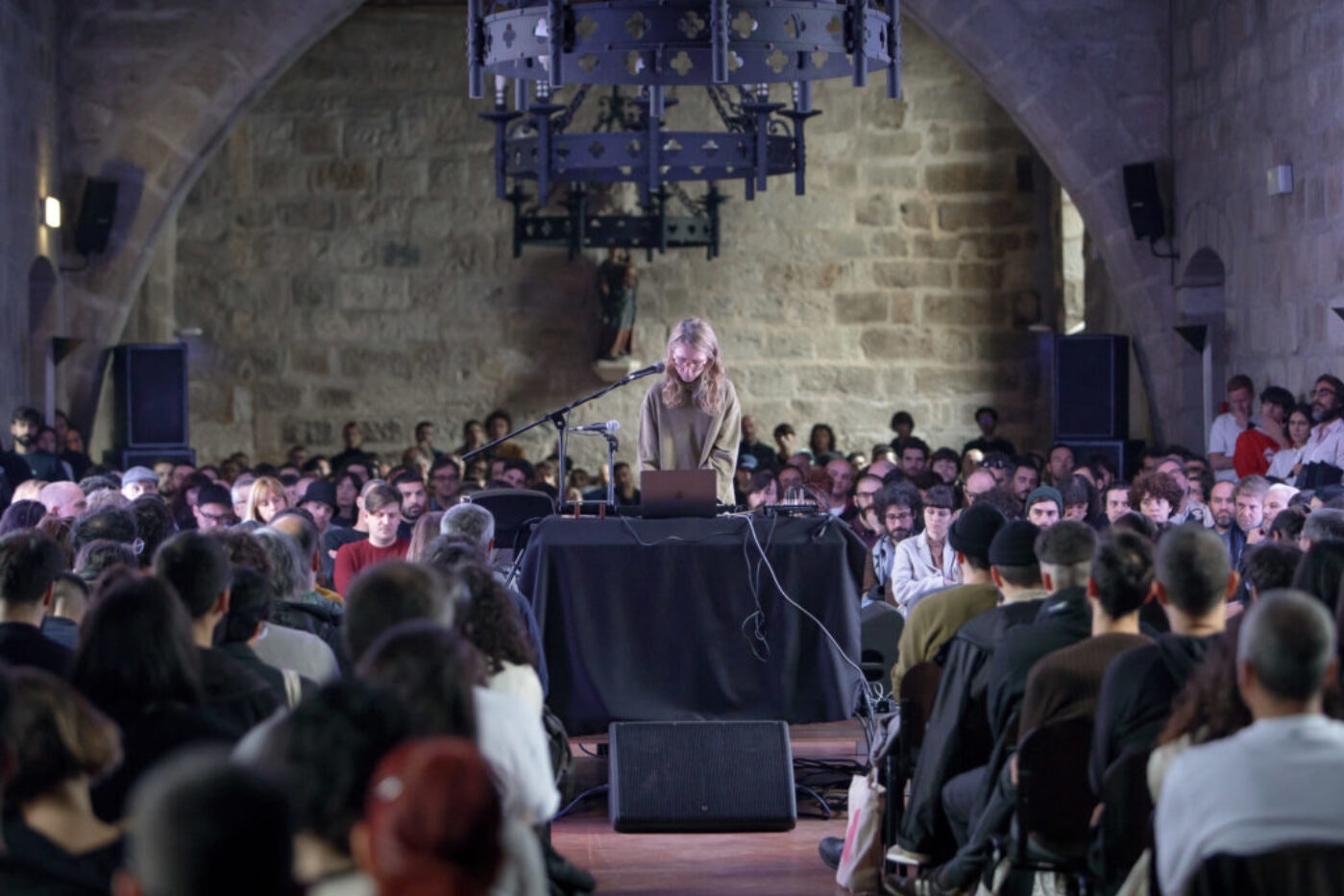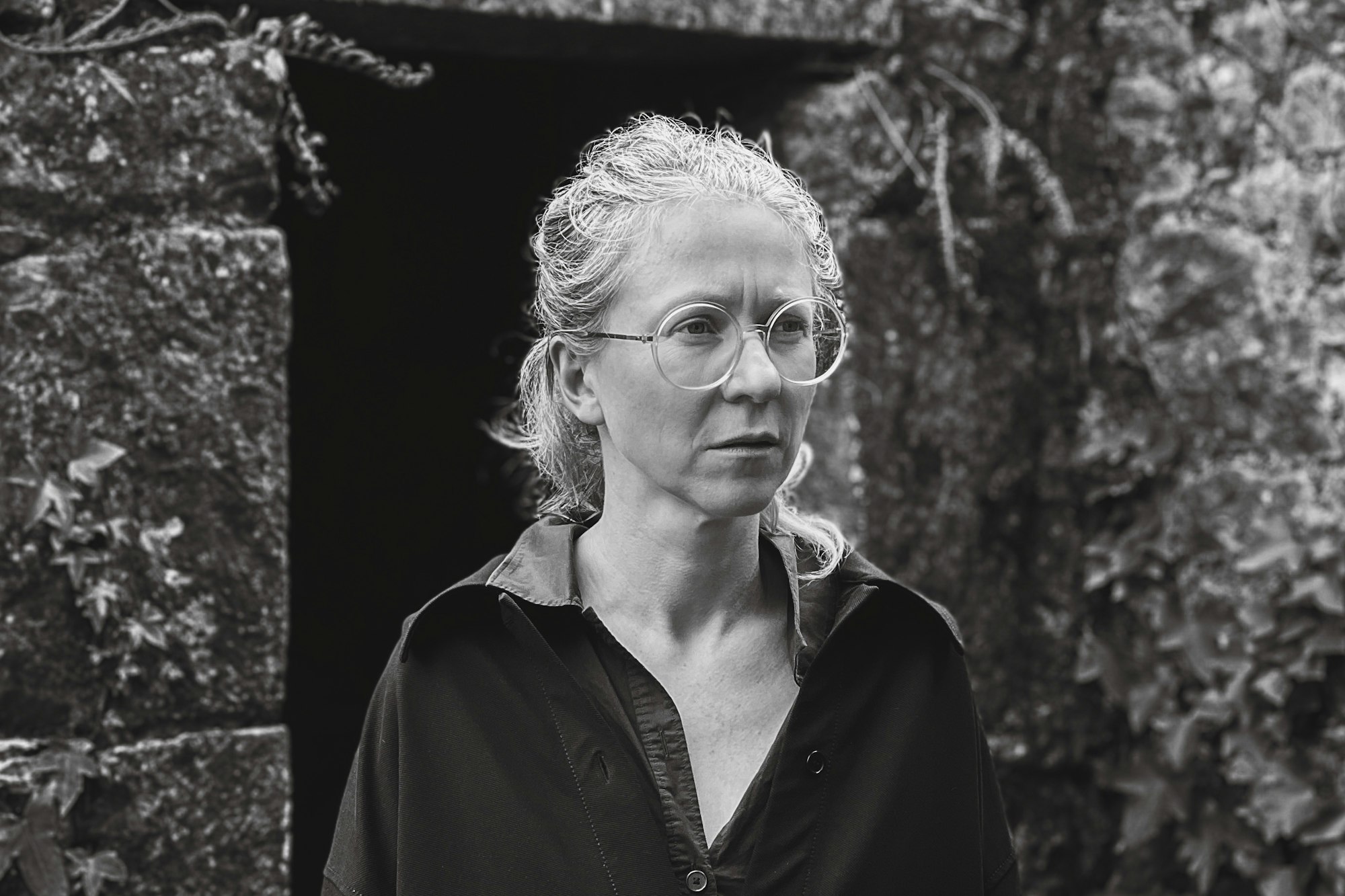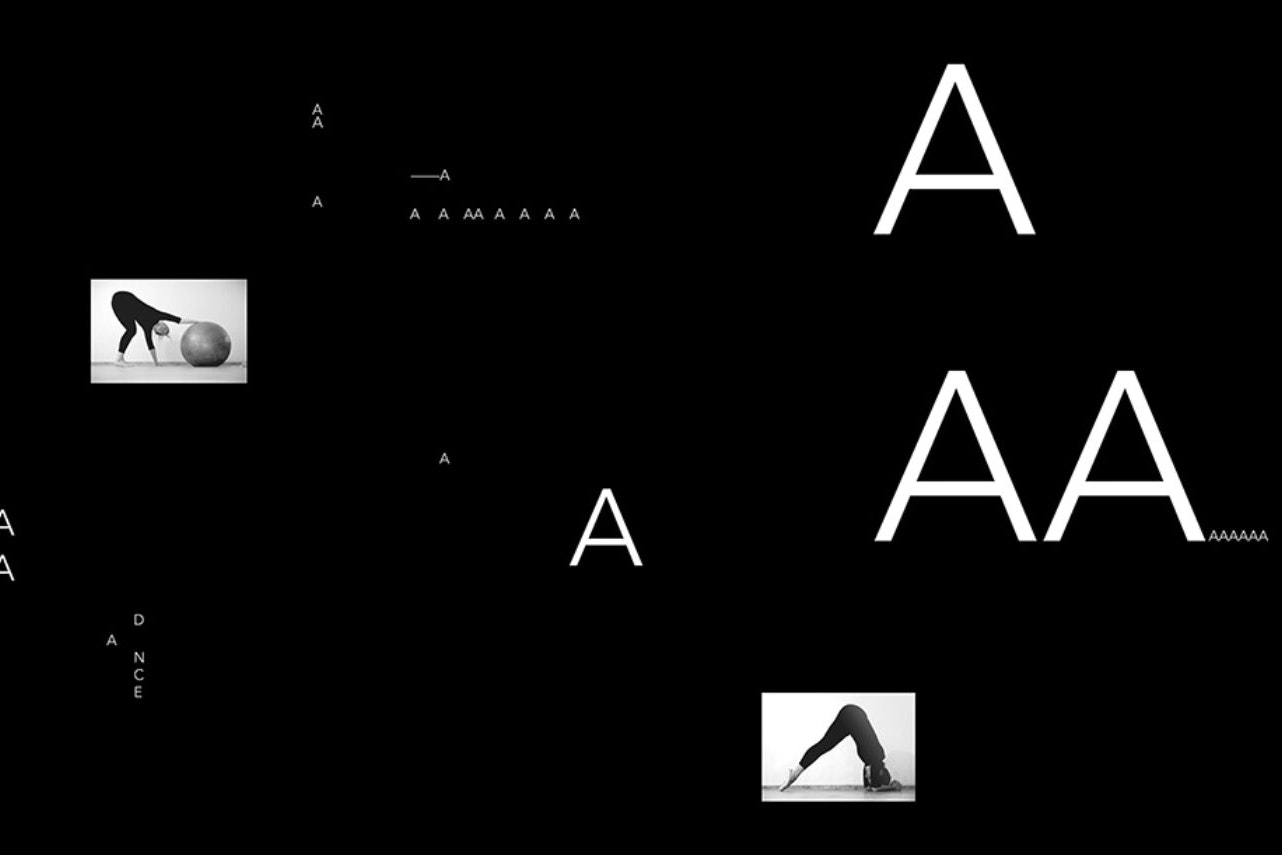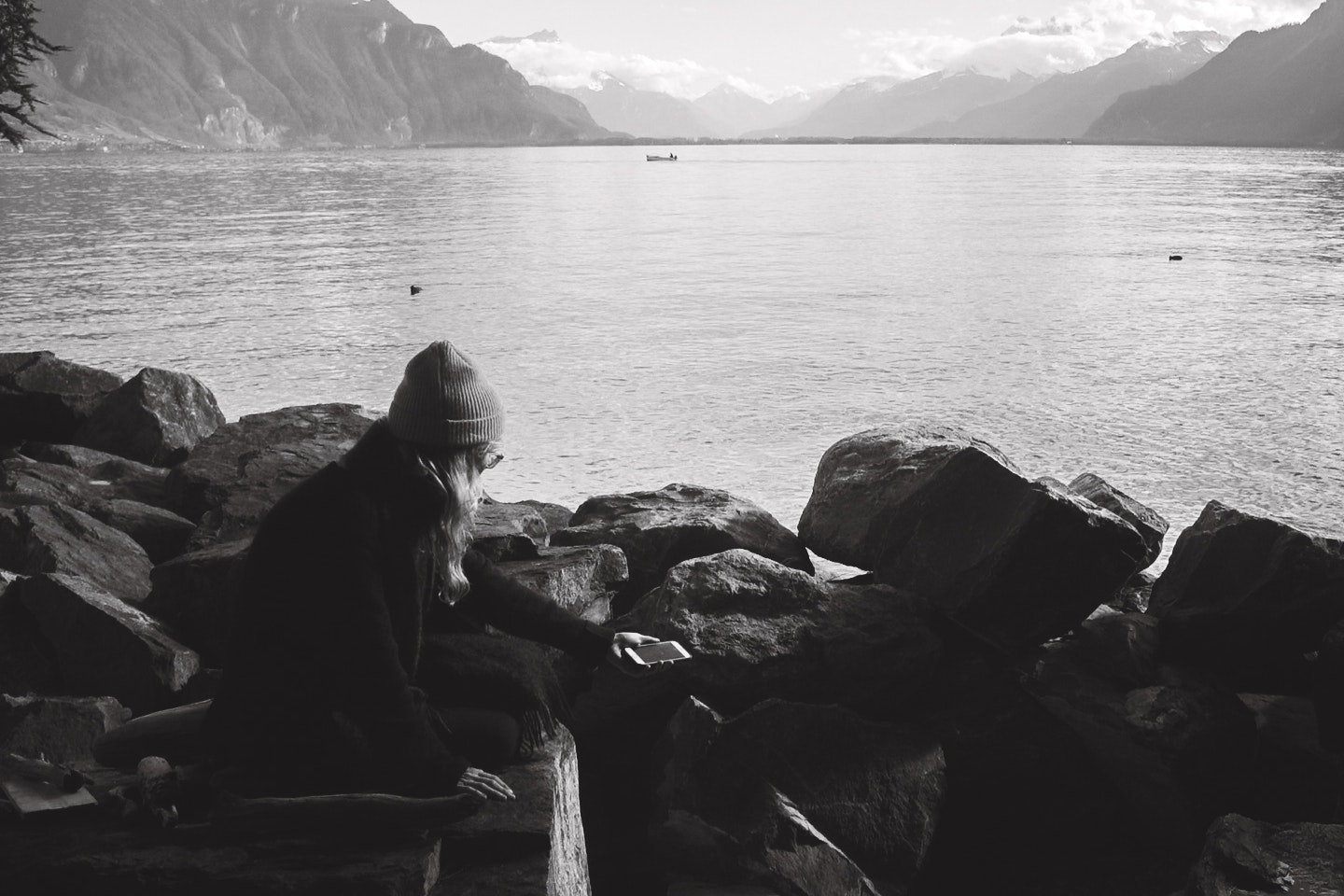Words by Anton Spice
In the late 1960s, artist Agnes Martin left New York City for New Mexico and built herself a house. For months she worked pouring, shaping, and drying bricks to be assembled into a one-room abode. Like her gridded paintings, the home she fashioned was structured and organic, both set into and very much of the landscape.
The House that Agnes Built is the shortest track of Félicia Atkinson’s new album Image Language, but it encapsulates something of the whole. “I feel building a record is like building a house,” Atkinson writes over email, as she explains how time spent between homes – at La Becque on the banks of Lac Léman in Switzerland, and then by dunes of the Normandy coast - has shaped her work. “Landscape is mostly what feeds me energy to make music,” she continues. Like Martin’s one-room house, Atkinson’s album is both in and of its environment.
A musician, artist and writer, who co-runs the label Shelter Press with her husband Bartolomé Sanson, Félicia Atkinson is concerned with the ineffable connections between people and place. Drawing on literature, architecture and ecology, her practice is as likely to include environmental field recordings as improvised cut-up poetry. As she speaks quietly to the listener, her words take on a material quality of their own, held somewhere between how they sound and what they mean.
In that sense, Atkinson’s work invites close attention. References to Robert Ashley, John Cage, or Agnes Martin for that matter, are never gratuitous. Following her conceptual threads are just as likely to lead to the sculpture of Isamu Noguchi or the films of Derek Jarman (who had a unique home of his own). On Pieces of Sylvia, lines from three of the poet’s works are laced into one another at different depths. The album’s final track, The World is Full of Abandoned Meanings, takes its name from author Don DeLillo’s 1985 book, White Noise, but it is the next line, omitted from view, which feels even more pertinent: “In the commonplace, I find unexpected themes and intensities.” Image Language hints at something just out of view, something beyond what is being said.
I consider music as an energy, a language, with its own grammar that is inextricable from the world around and inside it.
Atkinson speaks of relearning to find wonder in the overlooked through the eyes of her young son, discovering in the quotidian details of everyday life a kind of universal domesticity that has something to say about how we as humans inhabit our world. “I consider music as an energy, a language, with its own grammar that is inextricable from the world around and inside it,” she writes. On Image Language, Félicia Atkinson has invited us into her home - house and garden, inside and out.

Image Language is described as “an environmental record, in the vastest sense of the word”. What does that vastness evoke for you?
When I composed the record, I spent half of the time facing Lac Léman surrounded by the Alps, and the other half walking through the empty beaches of Cotentin in Normandy, France. It was Covid time and even in season, those places are never crowded. There, off-season, it was completely empty of humans.
I felt myself facing two embodiments of water, the lake and the sea. I was reading Rachel Carson and thinking of the beginning of our Earth, thinking about meteorites falling into the water. I felt small. I still do. I feel music has this capacity to fill the void; like any sound. But I was also wondering about how to incorporate that void, to bring some kind of translucidity to the music, to keep silences and emptiness, to make the music a breathing material, with its absences and presences.
Music has this capacity to fill the void.
There is a sense of diverse materialities in the titles of the tracks - mist, sand, water, stone. Do you also treat sound as a material in this constellation?
Yes. I feel sound is a material among others. I don’t consider making music as a world unto itself. For example, one of my practices before a concert is to walk, or when I am at home, to the garden. I try to spend the least possible time in front of my computer. It is while I am gardening that I prepare my ability to listen and to make music. Sometimes it is through cooking or drawing. I consider music as an energy, a language, with its own grammar that is inextricable from the world around and inside it. As you said, water, sand, stone, mist … it is porous. It goes in and out of the music, and the music goes in and out of the environment, like breathing again.

Your work often feels rooted in a physical place, where the field recordings provide the feeling of a body moving in an environment. How important is it for you that there is a connection between sound and place in your work?
Yes. Movement is so important. The Earth spins! We’re spinning with it! The record is spinning too! Therefore, when I walk in the dunes or I play the piano, I am moving too.
What I try to share with the audience is an interpretation, a form that grows inside that movement. I love the idea that music travels from one place to another through the recording, or gathers people at the same place through a concert. Those two energies are very interesting to me. Also, I am very interested in sculpture, and how a sculpture by Barbara Hepworth or Isamu Noguchi for example changes the perception of space while walking around it. I think music can provoke this kind of feeling too.
Agnes Martin’s house in New Mexico makes an appearance in Image Language. The residency at La Becque looks similarly set in the landscape. What relationship does architecture specifically have to this record?
It’s very important. I feel that building a record is like building a house. The relationship with the drawing and its reality. The relationship with posterity and sustainability, and how to inhabit it, whether it is for me as a kind of host, or for the listener, to make room for them. Also, this record was made when I didn’t have a home. We were hosted by people and structures. We were in-between places and this record is also about the fantasy of a promised home.
I love the idea that music travels from one place to another through the recording, or gathers people at the same place through a concert.
We actually found a home just after the record was completed. Having not had one at that time, I thought about the relationship between some artists and their land or houses, such as Derek Jarman, Agnes Martin and Georgia O’Keefe. How do you remove yourself from the city and build an environment of your own, in nature or desert, with all the material surprises that come with it? How do you build a garden or a house and make it your work? How can you be just an inhabitant of something wider? How do you deal with all the realities of the world and in the meantime find a place of your own where you feel safe?
I read in the text accompanying your La Becque residency that you would also paint and draw every day. What does that visual expression give you and is there an echo of this in the title of the album?
I like the idea of drawing or painting every day, a bit like watering a plant. A continuum. But there are also times when I don’t. I believe in dormant or winter seasons where you have to stop doing what you do for a while. To step back to be able to go back to it later. It isn’t necessary to make music all the time.
When I was in La Becque most of the time when I was not recording, I was taking care of my child who was a toddler, or cooking. Every day we would walk and observe each stone, plant, and bug in the garden of La Becque for hours, and then do the same back in Normandy on the dunes at the beach. It gave me another way of looking at things, from his size and at his pace. He was discovering things for the first time, and I was rediscovering them with him too. I consider drawing, but also improvisation with piano and voice, sometimes like this – a way to connect yourself with an awakening. Being present and renewed every day.
I believe in dormant or winter seasons where you have to stop doing what you do for a while. It isn’t necessary to make music all the time.
When I play piano or Rhodes, when I speak with my voice recorded or live, it is always improvised. Even if I am reading cut-ups from books, I record them while improvising the reading. I never plan, I don’t know what I am going to do, and it is precious to me to share this discovery with the listener. To be at the same level of discovery both inside and outside the record.

The material which accompanies the album makes reference to Jean-Luc Goddard. When people talk of “cinematic sound”, what does that mean to you?
My relationship to Godard is not about the cinematic sound, but more about the voice and text in his films. In his films, voices are characters themselves, they give something the image can’t give. That is why I called the record Image Language. When Image brings Language and when Language brings Image. When there is an exchange of forces, an inversion of values.
I could have also mentioned Ed Rusha or John Baldessari, or even Christopher Wool for their relationship to language in painting on the one hand, and/or Chris Marker or Agnes Varda and the importance of language and voice in their films, on the other. In general, I am interested when a medium questions the medium itself.
Your voice provides a degree of intimacy throughout the album, which makes the listener feel like they are being confided in. What role does the spoken word play in your compositions?
Well, of course, I have been very touched by Robert Ashley’s work, from a very young age. But also John Cage’s voice. The reading voice, the speaking voice, is something so bare and human. To me, it is an interesting instrument because each voice is different and unique. I am also interested in the presence of literature within music. Since its beginning, music has contained narratives, it transmits stories and poems. I want to keep that energy. I am influenced by the work of the poets Jerome Rothenberg, who collected oral literature in Technicians of the Sacred, and David Antin, who performed speaking discourses which he would transcribe after saying them.
In Godard's films, voices are characters themselves. That is why I called the record "Image Language".
My way of working keeps that oral dimension since I don’t write my text in advance. It comes to me through my body and mind, closing my eyes, or I gather books around me and pick words like I would blackberrying.
Voice also is a strange animal that survives death through a recording, it is literally a ghost. It is a strange feeling to somehow detach your voice from you, like a layer you pull off and give to the audience, a strange quarter of an apple.
Voice also is a strange animal that survives death through a recording, it is literally a ghost.
The motif of “a fence to keep the animals out” in Becoming Stone seems to play on the divide between nature and society, between the home and the landscape. How do you begin to imagine a more entangled ecology in sound?
That’s a sentence I found in a gardening book. “I believed that a fence could keep the animals out”. Of course, the narrator discovers that it doesn’t. The whole paragraph in the book was not scary at all, just more of an observation, but I extracted it for its ambiguity and its narrative power.

I couldn’t make a record about this relationship to the feeling of home and landscape without evoking its limits of it. How to stay hospitable in a world that mostly isn’t? I don’t have a proper answer, but I felt like opening a question. If I look at the sea, every morning I also think often of people dying crossing it, of wires at the bottom of it, of the disappearance of sea species. If I garden, I think of the bees and insects and birds I want to welcome in. If I look to the sky, I enjoy watching the stars, but I am thinking also of satellites, drones, rockets, missiles, and wars. There is no bubble. It’s a flux, again, of in and out, alone and together.
